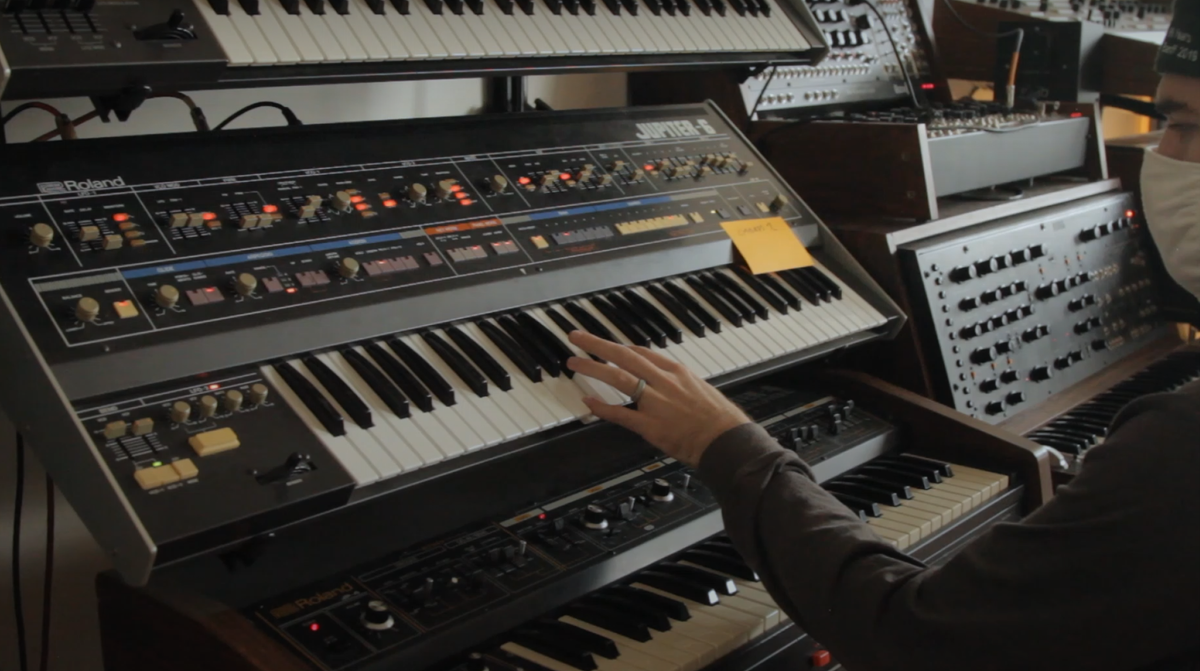Welcome back everyone! We just released our latest Preset Expansion Pack: Analog Update, and to celebrate, I wanted to talk about some of the synths that inspired us to create this collection.
There's no other sound on the planet quite like that of a vintage analog synth. Maybe, it's something to do with the warmth of its tone. The way the sound modulates ever so slightly between its voices. Maybe its the sparks of imagination that occur when you hold a note down and tweak its filter – The deep listening that occurs while you're designing your sound. Patiently searching for those sweet spots that will define your patch.
Few other music-making devices require that level of relationship with between player and instrument. In this way the synth becomes as much of a collaborator as it does a tool. And in that collaboration is where the magic happens.
We wanted to recapture that feeling inside of Current, but in a modern, and more reliable workflow (anybody whose had to replace the voice chips in their Juno, knows what I'm talking about...).
That's why we created Analog Update, vintage sounds reimagined for the modern producer.
We've created 55 new presets inspired by a plethora of our favorite synths ranging from pads, leads, basses, and everything in between that will allow you to recapture the feel of vintage analog equipment.
That's why for this article I wanted to take a second to pay tribute to the stories of some our favorite synthesizers and the people who made them.
Sequential Circuits Prophet 5

Introduced in 1978 by Sequential Circuits, the Prophet 5 was a groundbreaking analog synthesizer designed by Dave Smith and John Bowen. It was one of the first synthesizers to offer full programmability with patch memory, allowing musicians to store and recall sounds—a ground breaking innovation at the time. To put this into perspective Pete Townsend of The Who famously (infamously some would say) kept more than 10 Minimoogs in his studio at any given time all programmed to single patches.
The Prophet 5 featured five-voice polyphony and utilized two voltage-controlled oscillators (VCOs) per voice, summed into the icon Curtis low-pass filter. Providing the synth is legendary rich and warm sound.
Its versatility and user-friendly interface made it a favorite among artists across various genres, including pop, rock, and electronic music. The synthesizer underwent several revisions (Rev 1, Rev 2, and Rev 3), each introducing technical improvements and increased reliability. In 2020, Sequential reissued the Prophet 5, blending its classic sound with modern enhancements and reliability.
Bernie Worrell playing a pair of Prophet 5's during the Talking Head's landmark "Stop Making Sense" tour
Yamaha CS80

Released in 1977, the Yamaha CS-80 is often hailed as one of the most expressive analog synthesizers ever made. As Yamaha's flagship model at the time, it offered eight-voice polyphony with two independent layers per voice, allowing for complex and lush sounds.
The CS-80 was renowned for its expressive capabilities, featuring a ribbon controller for pitch and modulation, polyphonic aftertouch, and a velocity-sensitive keyboard. These features enabled musicians to impart a high degree of expression and nuance into their performances, emulating the dynamics of acoustic instruments.
The synthesizer gained iconic status through its use by composers like Vangelis, notably on the "Blade Runner" soundtrack, and has been a coveted instrument despite its hefty size and weight.
Vangelis playing his CS80
Roland Juno-6

The Roland Juno-6 was introduced in 1982 as an affordable and accessible polyphonic synthesizer. It was the first in Roland's Juno series and featured six-voice polyphony with digitally controlled oscillators (DCOs), which provided greater tuning stability compared to the analog oscillators of earlier synthesizers.
The Juno-6 did not include patch memory for storing sounds—a feature added in its successor, the Juno-60—but it offered a straightforward interface that made designing sounds inspiring and intuitive.
One of its standout features was the lush onboard chorus effect (an effect which grew to legendary status in it's own right), which enriched its sound and became a hallmark of the Juno series.
The Juno-6 became popular among musicians for its warm analog tones and reliability, leaving a lasting impact on the sound of 1980s pop and electronic music. The Juno series has also undergone a critical revival in the 21st century finding itself in countless records of the aughts and 2010s, such as Tame Impala's "Currents" and Animal Collective's "Merriweather Post Pavillion."
The Juno 60 featured in Animal Collective's My Girls
With Analog Update we wanted to create patches as rich and warm in character as the synths we grew up listening to. You can preview and purchase the sounds here. If you're subscribed to All Access then Analog Update is already available inside of Current!
See you next time! And until then – Keep creating!


